The famed defender of the classical principles has published a new book – Andrea Heller previews this exciting new publication.
“When I look at the question, what is classical dressage or better – classical riding – because for me, classical has nothing to do with the discipline. For me a classical rider is able to train his horse for what he wants to do, without damaging the horse’s body or mind. A good cowboy can be a classical rider, if he is a good cowboy…”
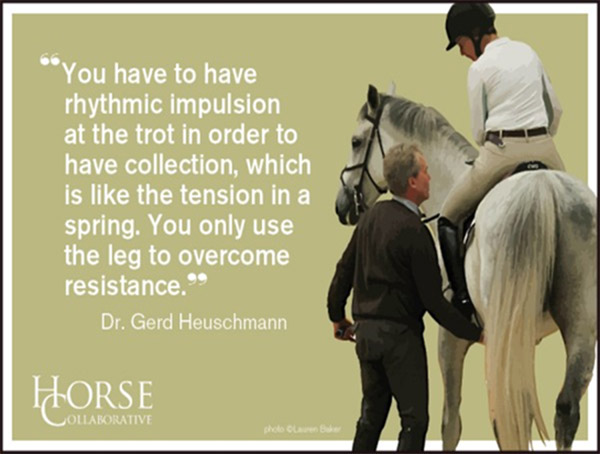
Dr. Heuschmann gives us this example: “I was visited by a cowboy from Montana a few years ago. He was out of the USA for the first time. He is a great horseman, and has spent his life with his cattle and his horses. This Cowboy worked my horse on the ground, and, I saw he is doing exactly the same thing as I do, which my biomechanical explanations, say that I ought do:
What happens that makes lateral steps in walk?
What happens to the back?
What happens to the shoulders?
What happens to the poll?
He’s doing the same things I do– working with his rope and he says, “now we open the poll”, and he says “this brings the mind to the ground.”
I say, “oh! he stretches the upper muscle system and the neck”. At the end we recognize that we are both right. When the horse relaxes the muscles and starts chewing, his mind gets ‘to the ground’ – this is why we should talk more with horsemen from different disciplines.”
SO WHO IS GERD HEUSCHMANN?
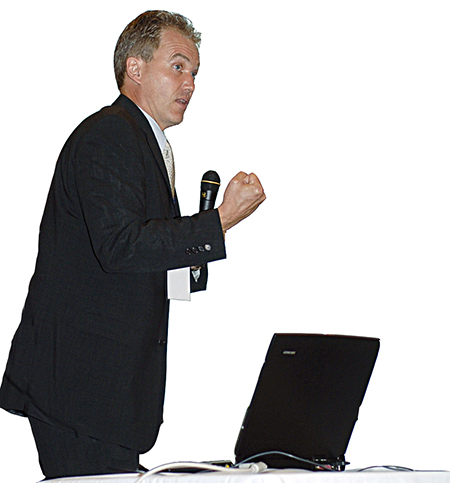
Ten years ago, Dr. Gerd Heuschmann rocked the equestrian world with his international bestseller Tug of War, a searing indictment of modern training and riding techniques that are sometimes used to the detriment of the horse.
Dr. Heuschmann trained as a Bereiter (master rider) in Germany before qualifying for veterinary study at Munich University. There he specialized in equine orthopedics for two years before accepting a post as the head of the breeding department at the German FN, which he eventually left to start his own practice in Warendorf.
He has been an active member of the ‘hyperflexion’ (previously referred to as Rollkur) debate, weighing in at the 2005 USDF National Symposium and the 2006 FEI Veterinary and Dressage Committees’ Workshop. His book Tug of War and his DVD If Horses Could Speak became international bestsellers. In fact, according to the publisher, Trafalgar Square Books: “Tug of War is one of the most-often referenced books by serious horsemen looking to improve equestrian sport.”
“In the mid-2000s the German veterinarian Dr. Gerd Heuschmann, working with German Olympic dressage champion Klaus Balkenhol, created headlines when they publicized the findings of Heuschmann’s anatomical and biomechanical studies of hyperflexion,” writes Jennifer Bryant in “Rollkur: Dressage’s Dirty Word.” Heuschmann said that hyperflexion not only fails to develop the proper musculature for upper-level dressage, but the exaggerated flexion can also restrict the horse’s airway.
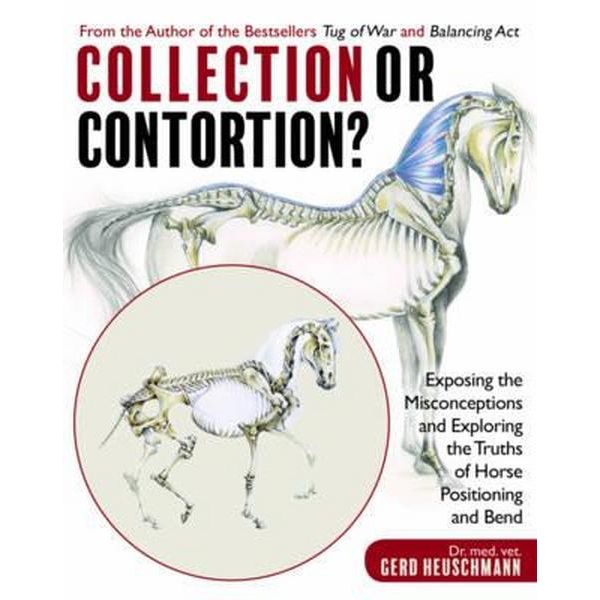
In 2017 Dr. Heuschmann released this follow-up book: “Collection or Contortion? Exposing the Misconceptions and Exploring the Truths of Horse Positioning and Bend.” This is a critical examination of two concepts—flexion and bend—that are necessary to understand in absolute terms when the goal is to achieve collection on horseback.
In this new book, Heuschmann cites the many masters of classical dressage who wrote essays and even entire books about flexion at the horse’s poll and longitudinal bend of the horse’s body. Dr. Heuschmann strives to fuse the often complex classic literature with the results of his own studies as an expert in equine anatomy and biomechanics.
He meticulously describes various movements used, their desired effects, and the truth behind the rider’s role in each. In addition, he unveils his recommendations for dealing with the horse’s “natural crookedness” and “false bend,” providing basic guidelines for schooling that ensure correct gymnasticization with the end-goal of a more athletic, collected horse, and happier, healthier horses in the long run.
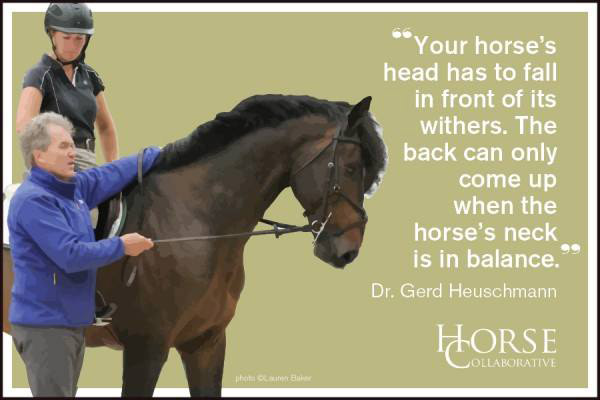
A PEEK INSIDE THE NEW BOOK:
The False bend: The neck is never to be “bent” more than the trunk (body) of the horse: The first illustration shows an incorrectly bent horse. The vertebral column kinks to the inside in front of the shoulder. This gives the illusion of a correct bend. Why is the neck so important? Gerd explains: “If a horse has an unstable, loose, or wobbly neck, in front of the withers, he cannot be ridden in the proper balance, nor can he bend, straighten, or collect. Only a neck that grows with stability out of the shoulder, and is stabilized by the muscles in front of the shoulder can contribute to the correct bend of the trunk. As seen is these illustrations, the incorrectly bent horse has an unstable neck. The second Illustration shows a correctly bent horse, with the neck properly supported and stabilized by the muscles in front of each shoulder.
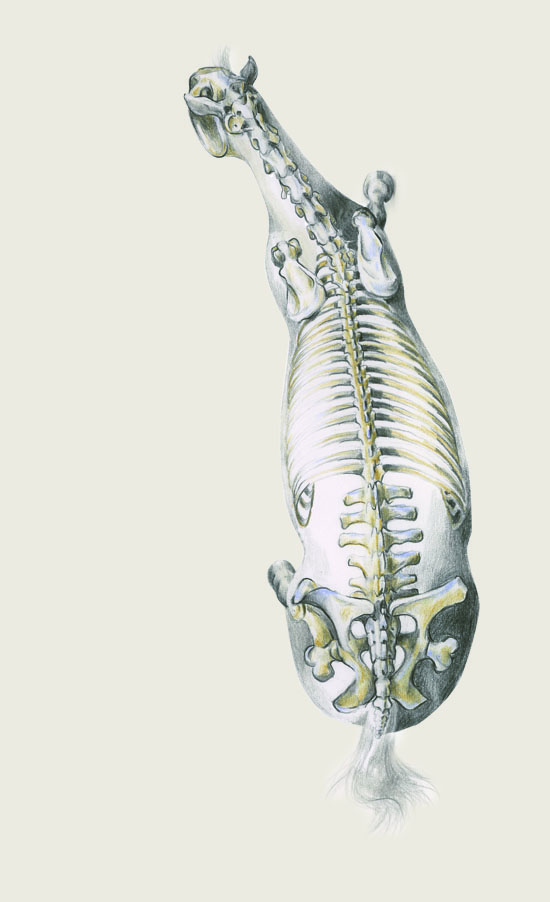
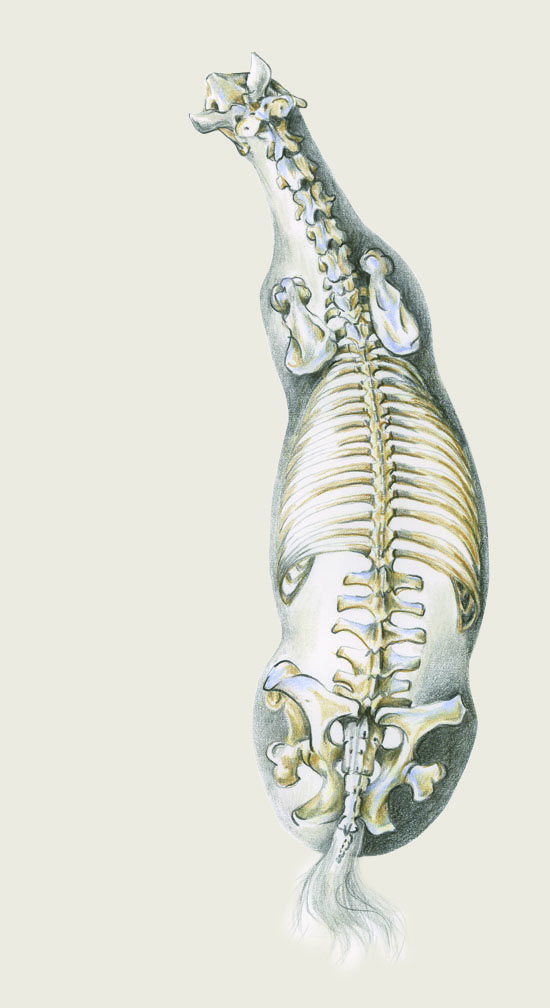
Illustration by Susanne Retsch-Amschler from Collection or Contortion? courtesy of Trafalgar Square Books
Furthermore—according to Heuschmann, “Flexion at the poll is an absolute prerequisite for developing correct bend of the trunk. Without flexion, there is no bend!” The effect of the rider’s inside leg, that encourages the horse’s hind leg (on the same side) to step under, is what ultimately creates the flexibility of the poll in the same direction (bend of the poll and flexion at the poll).
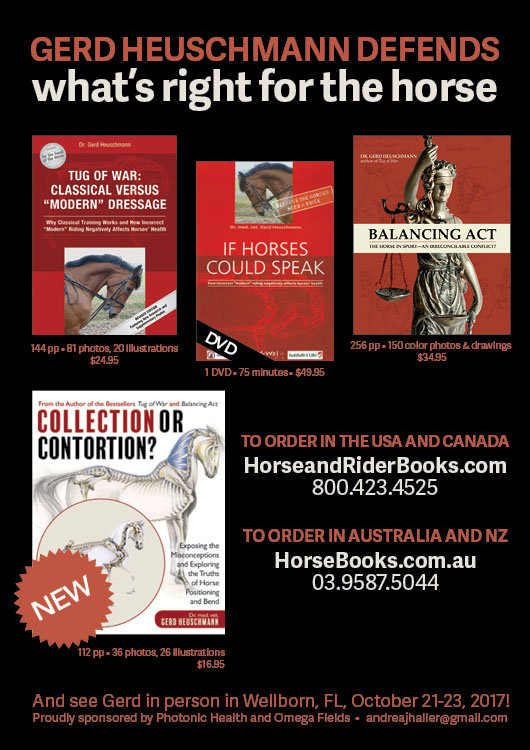
BALANCING ACT (2011):
In this book, Dr. Heuschmann explores a multitude of topics, with the overarching message: “A training philosophy that diametrically opposes one of two partners can never lead to harmony. Imagine a dance pair where the leader wants to force harmony and suppleness using muscular strength against his partner and, when necessary, devices to force an unnatural position”.
One chapter is about Straightness. In this chapter Dr. Heuschmann explores the causes, and remedies for “natural crookedness”. Each horse is naturally better going in one direction or the other, similar to “humans” being either right or left-handed. In the illustrations below, the horse that is hollow to the right has musculature that is less elastic on the hollow side. These hollow horses tend to fall over the outside shoulder and resist or avoid bringing the inside hind leg underneath their torso, over their center of gravity.
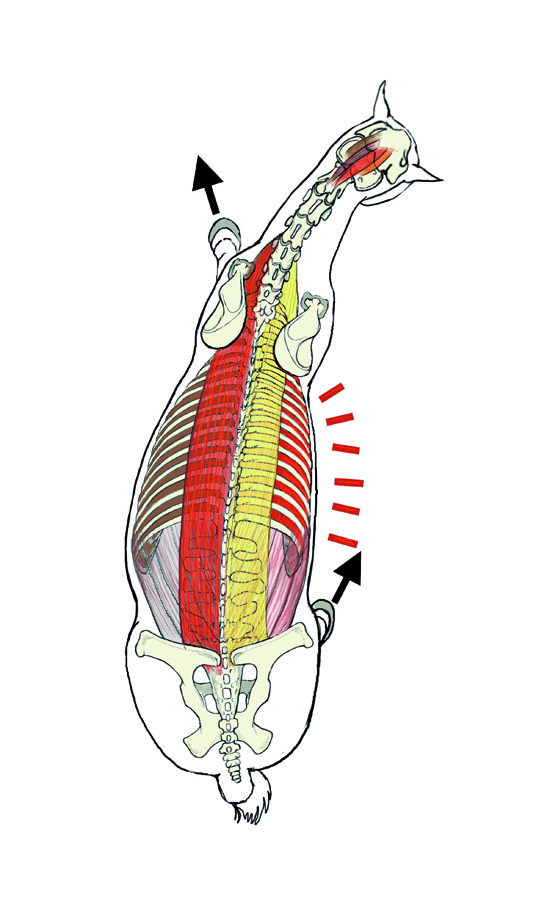
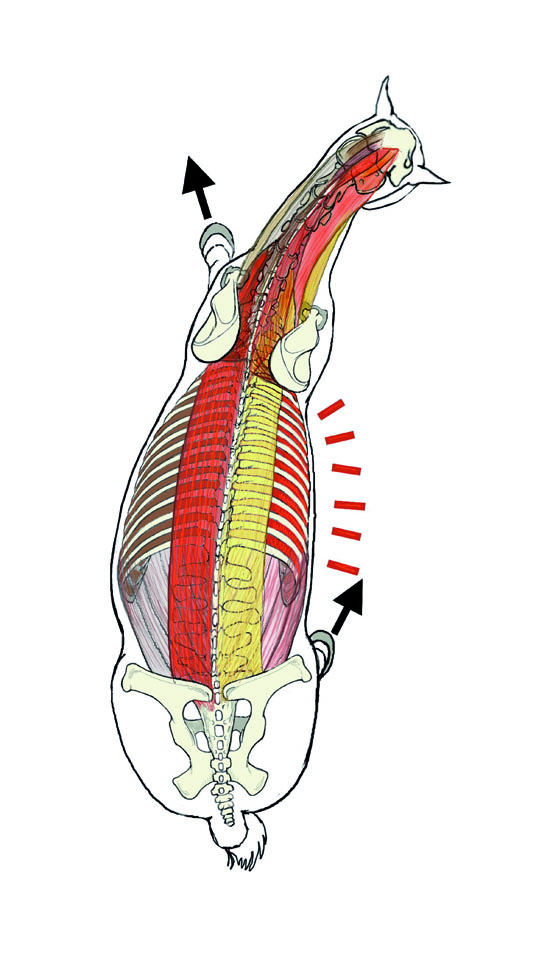
Illustration by Susan Harris from Balancing Act courtesy of Trafalgar Square Books
In this book, Dr. Heuschmann describes Horizontal Balance and Vertical Balance. Without Horizontal Balance, a horse cannot be vertically balanced.
Horizontal Balance: The horse moves rhythmically (Rhythm), swinging (Suppleness) and with consistent contact with the rider’s reins (Contact). Then the horse develops Vertical symmetry: the horse lets himself be straightened, and flexes and bends equally in both directions. He accepts diagonal aids. The horse loses resistance (stiffness) in the trunk, poll, and haunches. He increasingly stays attuned to the rider’s supple seat aids. The quality of the balance steadily improves.
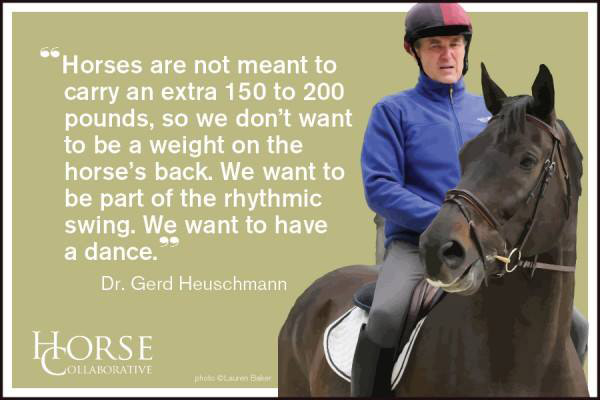
ABOUT HIS DVD IF HORSES COULD SPEAK
This provocative and ground-breaking dvd, If Horses Could Speak, takes a step further into the examination of the horse’s “riding experience” and see just how specific kinds of movement and posture impact the horse’s skeleton and musculature.
Through the magic of amazing 3D animation—as never-before-seen in an equestrian video of this kind—viewers are shown how the horse’s limbs, muscles, and ligaments interact at various gaits. In addition, live-action examples of riding, both good and bad, demonstrate the effect human beings have on their equine “partners.”
If Horses Could Speak includes interviews with professional riders, veterinarians, and academics who specialize in the study of the horse’s anatomy and how riders can best work with it, rather than against it.
His lecture:
Dr. Heuschmann paints the skeleton, tendons, ligaments, and muscles on a horse and then explains in detail how they work and how easily they can be damaged. The demo horse is then shown at the walk, the trot, and the canter.
No matter what discipline the attendees/riders are interested in, the BioMechanics lecture applies to them, because it is all about the Horse. Yes every horse is similar in this regard, no matter what discipline they are used for. Everyone wants a balanced horse: Jumpers, reiners, trail riders, and of course, dressage riders.
Many of today’s injuries like suspensory problems are completely man-made, and can be avoided by correct, classical training and riding, according to Dr. Heuschmann.
Gerd explains the secret: “My ideas are to bring back the classical approach to training, this is built on the Horse’s Nature (instincts), not human interference. We have the training scale, we still discuss suppleness, but in riding, training and competition, we often see the opposite. What I do, is not new. But it is a renewal of the Classical approach.”
“The first step is to convince people in their minds and their hearts that there is a different ideology to horse training.” Gerd explains: “Riding is an art, and art needs education. Training takes many decades to learn. There is no quick fix. The well-being of the horse comes first. It takes years and years to become a horseman! Only then you can start to examine the back, the mouth, the mind, of the Horse.”
Kurt Albrecht Von Ziegner (World renowned Dressage Trainer and author of The Elements of Dressage is a good closing for us, with his commentary on Gerd’s work: “Horses have served humans for thousands of years with their blood and sweat. They have earned being treated with respect and fairness. We should keep watch that their health and well-being always stand ahead of other considerations—both in daily work and in competition.”
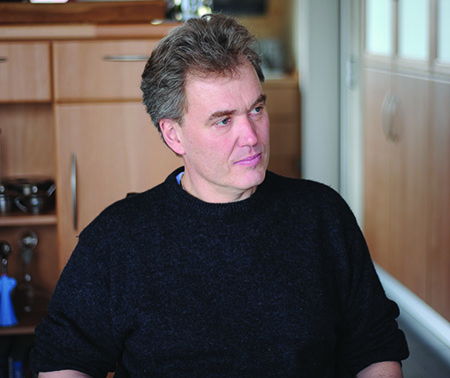
Dr. Heuschmann’s books and dvd’s can be ordered directly from the publisher at:
http://www.horseandriderbooks.com/gerd-heuschman/





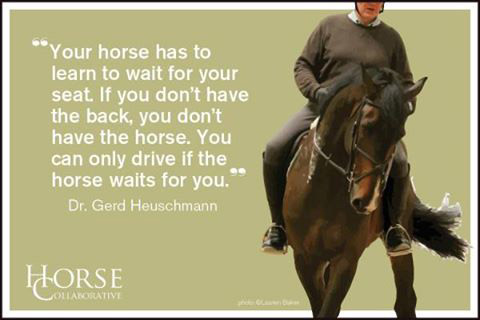
We’d love to see him again in Bozeman, Montana.